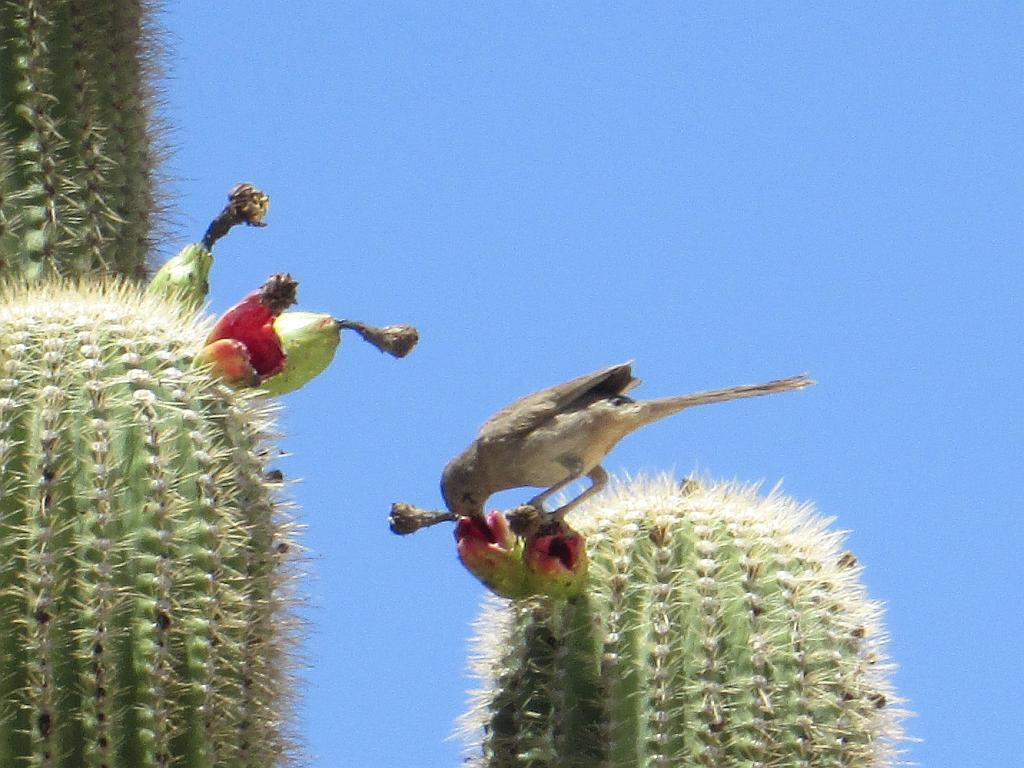This is a curve billed thrasher helping itself to the fleshy fruits growing on our giant saguaro in the front yard. We were walking the dogs and heard the bird’s distinctive “weet-witt-weet” call, which made us look up to the top of the saguaro where the bird was feasting. I did not have my camera, so Bob grabbed the little pocket camera and got this shot. Click on the image to enlarge.
We found a reference (sorry, no link) to the saguaro and seed propagation:
The saguaro is the largest columnar cactus found growing naturally in the US and bears the state flower of Arizona. This magnificent cactus represents the botanical symbol of North American deserts for many people around the world. These unique plants are tall, long-lived cacti that occur naturally and only in southern Arizona, northwestern portions of Sonora, Mexico, and sparsely near the lower Colorado River in California. Saguaros can live to be 200 years old, grow 50 feet tall and weigh as much as 20,000 lb. Saguaro roots radiate out from the base up to 50 ft and close to the surface of the ground. The shallow roots allow saguaros to absorb as much water as possible, especially from light precipitation events, which they store for several years if necessary. Flowers bloom in late spring (late April through early June) and fruits ripen about 37 days after flowering. Saguaro flowers are large, elongated, and bloom nocturnally allowing both night (bats and insects) and day foragers (birds, bees, and other insects) to feed on the nectar and aid in pollination.

